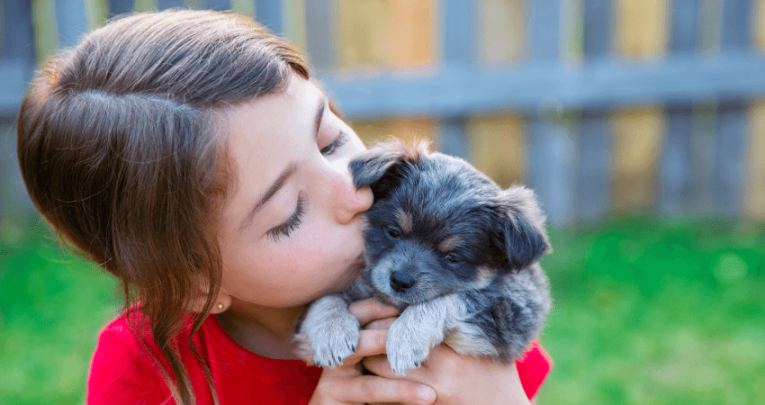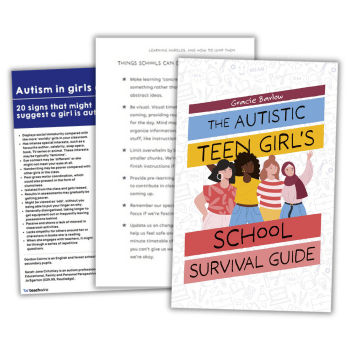Nurture group – Two case studies

Nurture groups within schools have proved successful in supporting children who are facing emotional and social challenges…

- by Teachwire
- Classroom expertise and free resources for teachers

Anglian Learning’s successful trust-wide approach
We’re seeing a rising number of children with the associated symptoms of hypervigilence, anxiety, low self-esteem, fight or flight responses and negative coping experiences. Nurture groups within schools have proved successful in supporting children who are facing emotional and social challenges.
In 2016, the Department of Education in Northern Ireland commissioned a report on the impact and cost-effectiveness of nurture groups in primary schools.
The report concluded that nurture groups have “a consistent, significant and large effect in improving social, emotional and behavioural outcomes among children from some of the most deprived areas.”
They also felt the groups were “cost-effective and have the potential to result in a significant saving to the education system and an even greater return to society by preventing the cumulative additional costs to the family, public services and the voluntary sector.”
Four years ago I set up the first nurture provision for our Trust, Anglian Learning, at one of our secondary schools. This had a significant impact, including keeping children in education, an increase in attendance and engagement in lessons. We’ve since developed similar provisions at four of the Trust’s primary schools.
Nurture is becoming an increasingly central part of the way we approach behaviour management. We understand that all children come from very different emotional standpoints and have a variety of emotional needs. If these needs aren’t met, we can’t expect children to be able to succeed in their mainstream education.
A home from home
We don’t set up nurture groups like a traditional classroom. Essentially, we try to create an environment that is a home from home for our pupils; a space where they can flourish and feel safe.
We usually set up the rooms with sofas, soft furnishings and play equipment, because it’s important for the children to be able to go back developmentally and rebuild any skills they might have missed.
When they enter the nurture group, we assess children using the Boxall programme to look for core gaps in their development. Rather than addressing this behaviour face-on, the practice of nurture goes much deeper in exploring the reasoning behind the behaviour. We can then develop specific intervention for each pupil using this analysis.
Our approach addresses the spectrum of symptoms we are seeing. In our nurture departments, there is an expectation that change will take time and commitment. We anticipate pupils may need intervention support as part of a nurture group for several terms.
Not all our schools have a separate nurture provision – instead it is embedded through approaches to understanding behaviour and mental health and wellbeing curriculums.
Many of our secondary schools also have therapy dogs that make a phenomenal difference. For anxious and angry children, the dog acts as an immediate distraction and leveller and children can de-escalate the situation. Food is also fundamental to the ethos of our nurture. We know that important conversations occur over a meal table, so this is common to all the nurture provisions.
You are who you are
A nurture approach provides a safe place for pupils; a place of respite, even for unscheduled visits. One of the biggest benefits to pupils is the solid understanding that they are who they are. It’s at this point that children can embark on their crucial journey of personal growth. The nurture group supports pupils in attending lessons, enabling them to feel safer and more confident in school.
Plans for the future
We’re developing an in-reach model at our Howard Community Academy, harnessing the specialism of our nurture teachers to develop the skills of all classroom teachers. While these distinct nurture departments have a role to play, the approach we are adopting will spread across the school, reducing the need for a separate area over time.
Across our schools, two members of the senior leadership teams are trainers in STEPs, a therapeutic approach to understanding behaviour. Several schools are completing the Nurture UK Senior Mental Health Lead training. An extensive training programme has been provided around supporting pupils with Emotionally Based School avoidance alongside working towards ensuring that all schools have an ELSA trained practitioner.
Adopting the principles of nurture is a whole-school approach and nurture groups will continue to be instrumental in supporting pupils at Anglian Learning.
Camilla Saunders is director of inclusion at Anglian Learning. Follow the @AnglianLearning on X for the latest news. Browse resources for Mental Health Awareness Week.
How Sir Alexander Fleming Primary School used a four-step process to create new nurturing environments
In September 2018, I walked into my new school. Straight away, I could see that SEND was a massive area of need. But it was being swallowed up by safeguarding concerns, and put on the back burner. I needed to get SEND back on the agenda.
The school had three pupils with education, health and care plans (ECHPs), and that was enough for me to question what we as a school could, and should, be doing.
1. Identify and nurture
It soon became apparent that even though the three children with EHCPs had the correct provision in place. We needed to do more to support all pupils with SEND.
At the time we only had one nurture space, which was specifically for our reception children. This wasn’t enough even then, and during the following five years the number of children with SEND difficulties increased massively.
We brought in two new members of staff, who had a great vision for the future of the nurture space. It would be a place that could build children’s sense of achievement. And where they could grow relationships and friendships within the school community.
The space, now called Patch, is based around a themed farmyard doll who loves and nurtures vegetables. It provides role play areas, reading corners and sensory areas to help children develop their resilience and independence.
All children within this provision now have a Boxall profile and a strengths and difficulties questionnaire filled in by their class teacher each term. This provides us with vital information that we can use to track and guide our planning. It’s a great tool and there are many versions available online.
Trending
2. Create a calming space
In January 2019, we had our next vision: the Den. With an ICT suite surplus to requirements when the school bought more laptops, we ripped out the desks and purchased a sofa to bring the Den to life.
Initially, this space was for one child, who couldn’t regulate in the classroom and spent most of his days wandering around school with a Teaching Assistant closely behind him. We needed to work with him on his strengths and help him communicate his behaviour more positively.
Next to our new Den was a set of toilets that were never used. So we ripped those out, too, creating a calm room with padded walls and safety glass, which was another space where children could go to regulate.
The Den is now dedicated to providing children in KS2 with coping strategies. It has been a huge success.
There is another element of the Den which is undeniably one of the children’s favourites – Bella, our adorable phantom cockapoo, who was recently joined by her sister, Honey
3. Outdoor learning
Then, in March 2020, Covid-19 made school become a very different place.
Our vision for children to be able to access both their classroom and a nurturing space was now impossible.
It was, however, a good time to get outside and develop our outdoor learning area. We designed and created allotments with vegetable gardens and began to plant a new outdoor learning area for our KS2 children to use. Three years later we won the Royal Horticultural Society’s Primary School Garden of the Year award!
4. Reflect and adapt
Also in 2020 we realised that some children who were accessing our nurture space, really needed a smaller classroom. These pupils were academically behind the rest of their cohort – some by over two years.
This was when the idea for the Hive was born. This space would offer bespoke sessions that would allow children to build on their independence and give them the confidence to have a go at any work that is suitably adapted to their academic ability.
The sessions would also provide pre-teaching and post-teaching support to secure understanding.
We also realised we were missing support for one part of the four areas of SEND: social, emotional and mental health needs.
…and get the right people in place
We decided to create another space, the TLC room. This is an area where children can access one-to-one and group interventions, such as Lego or sand therapy, and where they can talk openly and honestly about any concerns or anxieties.
Run by a full-time teacher and TA, the Hive takes up to 10 children. Morning sessions focus on English, maths, reading and phonics. Afternoons are comprised of targeted interventions for year groups.
My nurture group top tips
Know your children
As a full-time, non-teaching SENCO it’s easy to get dragged into the paperwork and not see the children. I teach in our Hive provision on a Friday morning, and volunteer to attend trips with classes. I love the fact that some of our nursery children know my name!
Make provisions work
We’ve created wonderful nurturing spaces, but no two years are the same. For example, last year, our Den provision was for one child who was placed at our school whilst a specialist provision place was found for him. He required two adults to support his needs.
The Den space needed to be adapted to suit, so I visited the specialist provision for ideas, and we also had support from the specialist provision. This year, our morning Den sessions are for a group of Year 3 children who need that nurturing support for their academic progress.
Visit other schools, including secondaries
Make time to see other provisions and explore what children will be offered once they transition to secondary school. I love having visitors to our school, where I can show them how we have created spaces and explain how we fund and staff them.
Network with other SENCOs
I make time to network regularly with other SENCOs in my LA. We bounce ideas off each other and support each other; some of us have become friends, too!
Lisa Pigg is assistant headteacher, inclusion team leader (SENDCO), deputy designated safeguarding lead and EAL lead at Sir Alexander Fleming Primary School in Telford.
Sir Alexander Fleming Primary School won the Primary Provision of the Year award at the 2023 nasen Awards. For more information on the awards, see www.nasen.org.uk or @nasen_org










